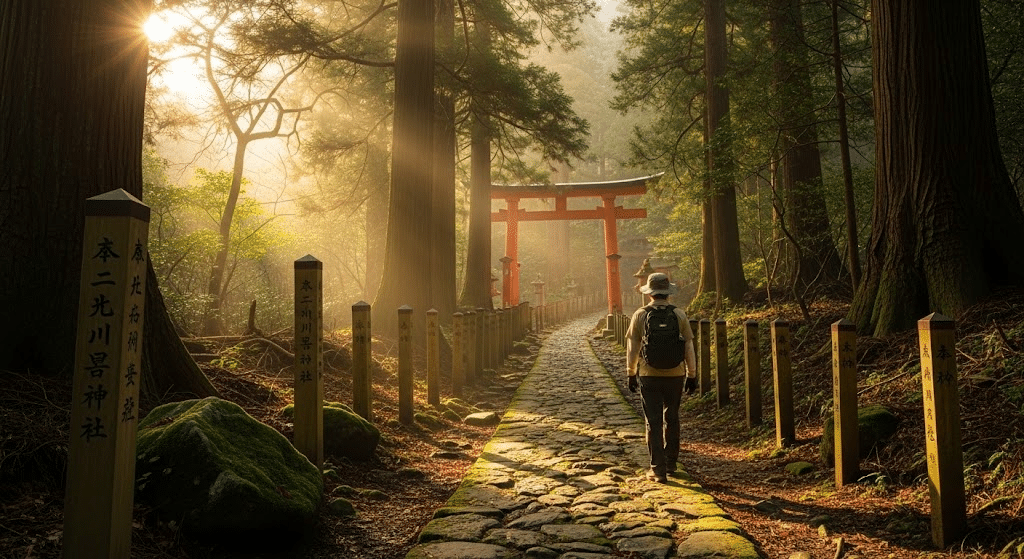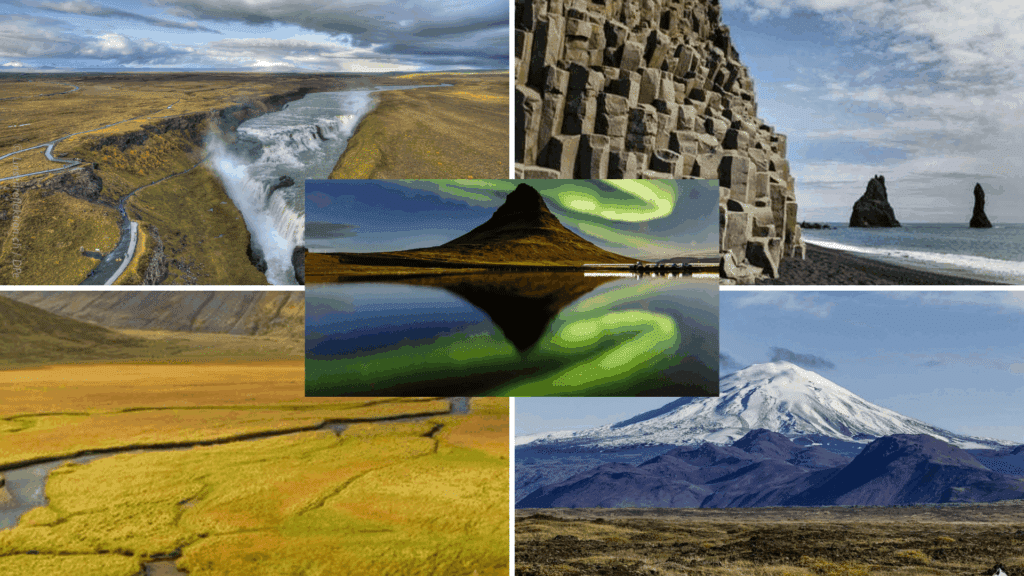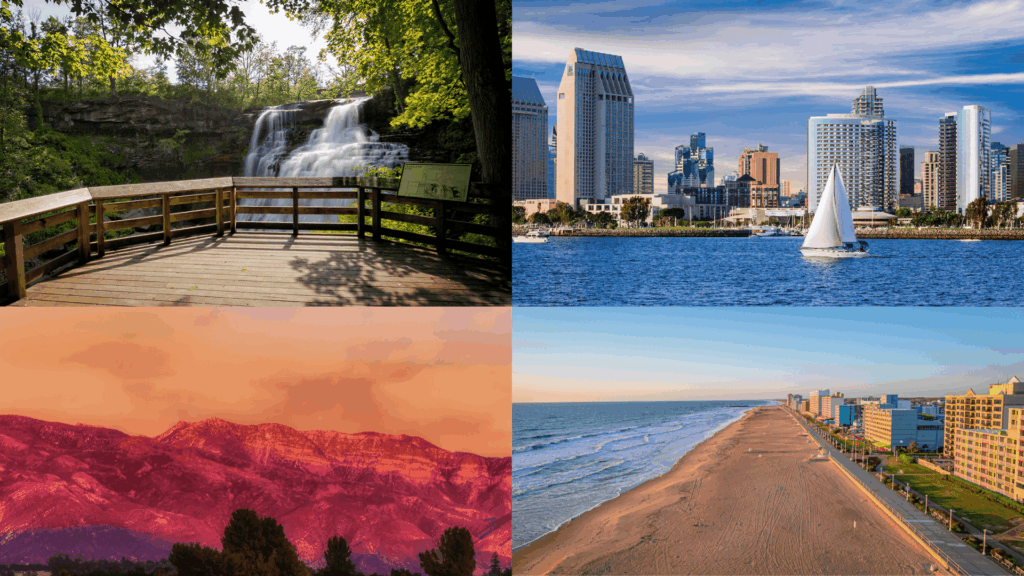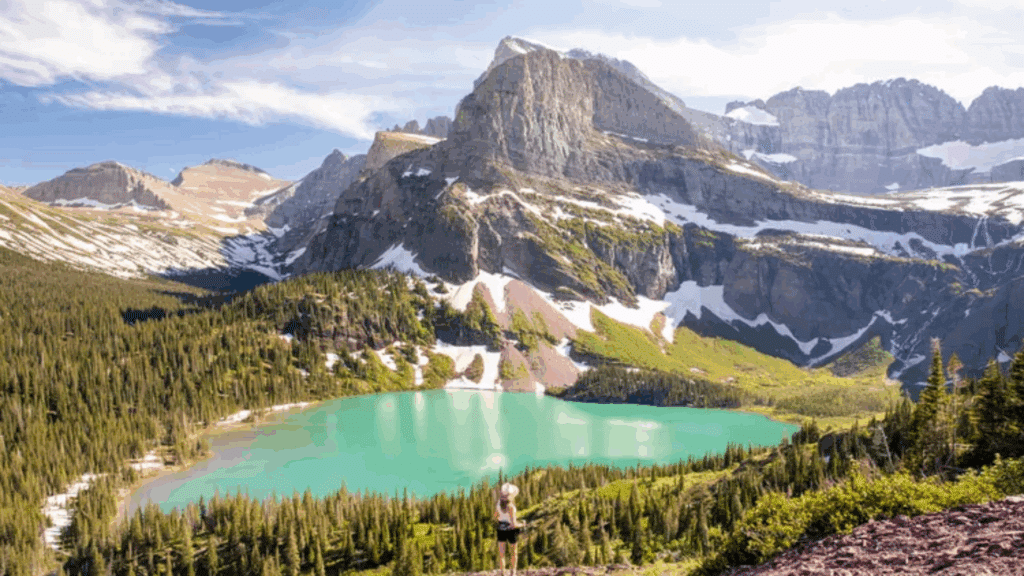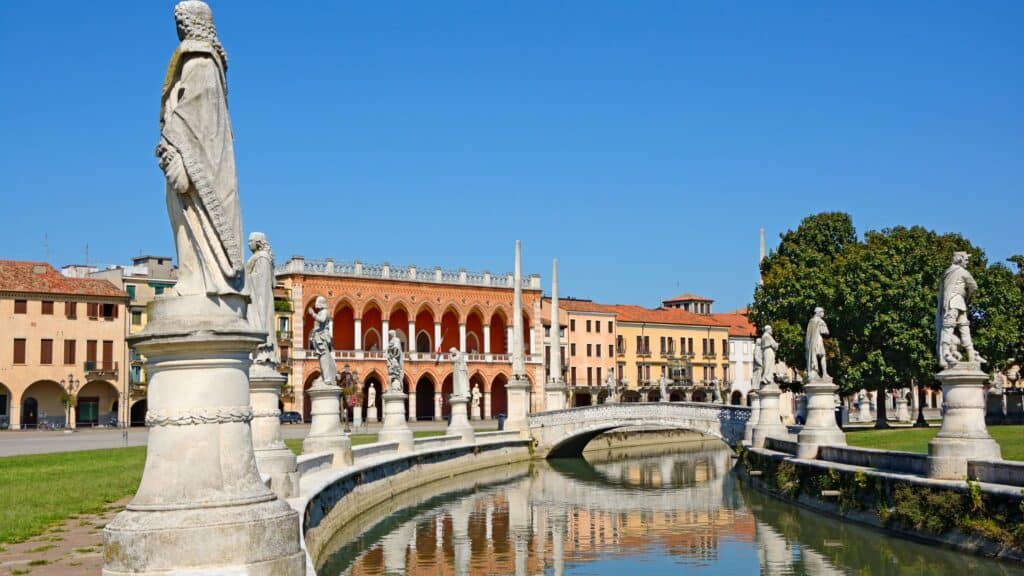Have you ever wondered what it means to walk in the footsteps of emperors and monks on ancient sacred paths?
The Kumano Kodo trail offers exactly this experience through Japan’s spiritual heartland. For over a thousand years, these UNESCO World Heritage routes have guided seekers toward three sacred shrines in the misty Kii Peninsula mountains.
The Kumano Kodo trail connects you to Japanese spiritual tradition, where Shinto and Buddhist beliefs blend with nature worship.
These ancient paths promise personal growth through physical challenge and spiritual reflection, offering an authentic pilgrimage unchanged for generations.
The combination of natural beauty, cultural significance, and spiritual depth makes this one of the world’s most meaningful walking experiences.
What Is the Kumano Kodo?
The Kumano Kodo is a network of ancient pilgrimage trails located on Japan’s Kii Peninsula.
These sacred paths have welcomed travelers for over 1,000 years. Emperors, monks, and ordinary people have all walked these routes seeking spiritual growth.
The Kumano Kodo trail holds deep meaning in Japan’s spiritual traditions.
It combines Shinto and Buddhist beliefs in a way that honors both nature and faith. For centuries, pilgrims have used these paths to find spiritual rebirth. The physical challenge of walking helps purify both mind and soul.
The heart of the Kumano Kodo experience:
- Historical significance: Over 1,000 years of continuous use by pilgrims
- Cultural importance: Combines Shinto and Buddhist spiritual practices
- Royal heritage: Walked by Japanese emperors and nobility throughout history
- Spiritual purpose: Designed for physical and mental purification
- Natural setting: Passes through sacred forests, mountains, and waterfalls
UNESCO recognizes the Kumano Kodo trail as part of the “Sacred Sites and Pilgrimage Routes in the Kii Mountain Range.”
This honor shows how important these trails are to world heritage. The designation helps protect these paths for future generations.
Walking the Kumano Kodo means following in the footsteps of Japanese history. Each stone and tree has witnessed countless pilgrims seeking meaning and peace.
The Kumano Faith and Spiritual Landscape
The Kumano Sanzan (three sacred shrines) form the spiritual heart of the Kumano Kodo trail.
For over a thousand years, these sacred sites have welcomed everyone from emperors to farmers, creating a unique tradition where social class disappears on the pilgrimage path.
Kumano faith connects deeply to Japanese creation myths, where gods first descended to these misty mountains.
Ancient cedar trees and sacred waterfalls are viewed as living kami (deities), making the entire walk a form of worship. This belief system blends Shinto nature worship with Buddhist teachings about rebirth and enlightenment.
Pilgrims collect stamps in their nokyocho (pilgrimage books) at small oji waystations along the routes.
This practice has continued for centuries, connecting modern walkers to generations of spiritual seekers. The physical challenge of walking becomes a path to mental and spiritual purification.
1. Hongu Taisha: The Shrine of Rebirth
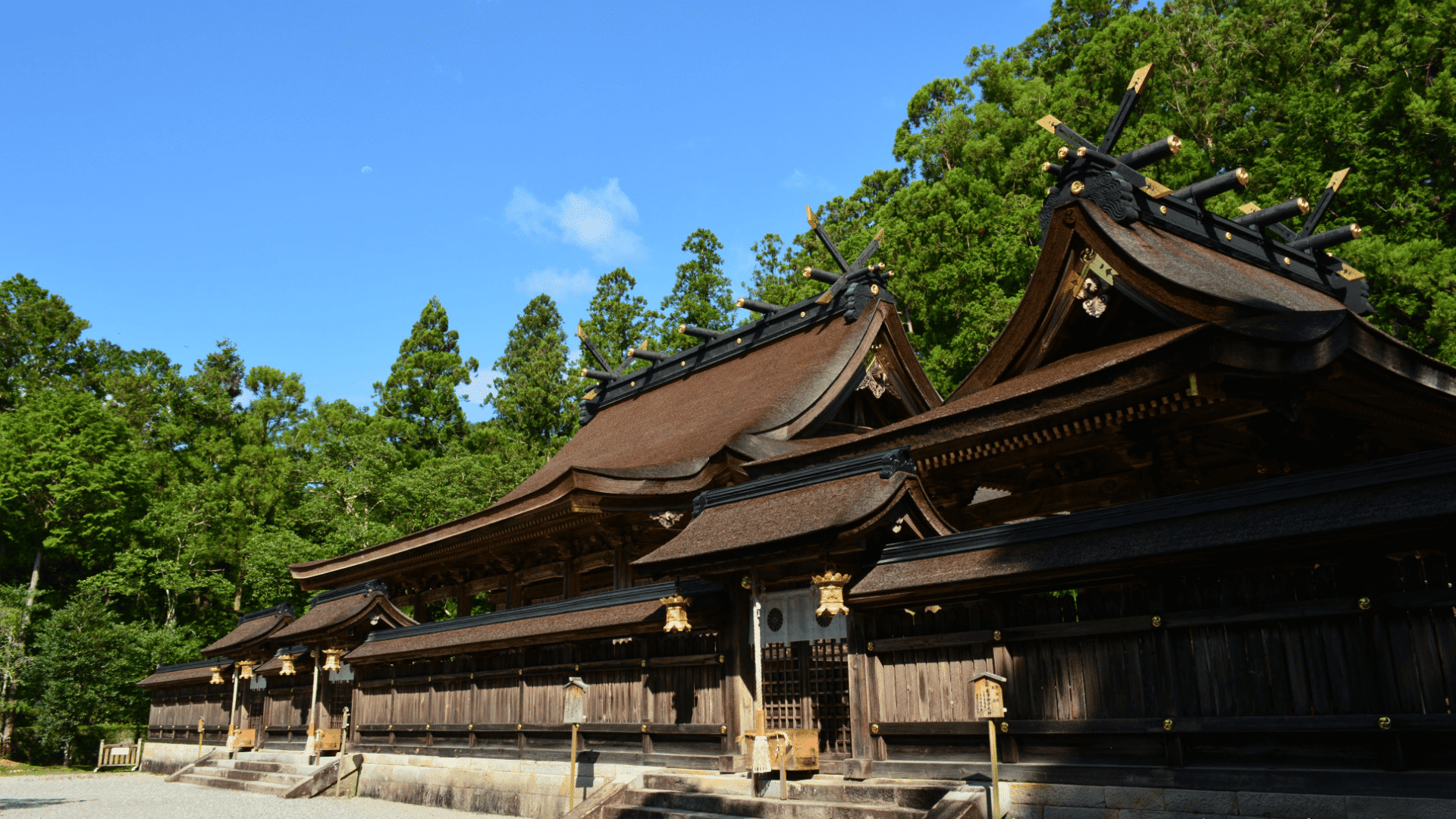
Image Source: Central Japan Railway Company
Hongu Taisha represents rebirth and spiritual renewal for Kumano Kodo pilgrims.
Located in a peaceful valley, floods moved the original buildings in 1889, leaving the world’s largest torii gate to mark the sacred original site. Pilgrims traditionally purify themselves at nearby Yunomine Onsen before visiting.
Traditional festival: The Hongu Festival takes place every April with traditional music and dance performances. Local communities gather to honor the deities and welcome spring’s renewal energy.
2. Hayatama Taisha: The Shrine of New Beginnings

Image Source: The Official Wakayama Travel Guide
Hayatama Taisha focuses on fresh starts and new opportunities near the Kumano River mouth in Shingu city.
The bright vermilion buildings house a sacred 800-year-old nagi tree within the shrine grounds. Visitors pray here for successful new ventures and positive life changes.
Traditional festival: The famous Oto Festival occurs every October with participants carrying portable shrines into the Kumano River. This water ceremony symbolizes purification and new beginnings for the coming year.
3. Nachi Taisha: The Shrine of Purification
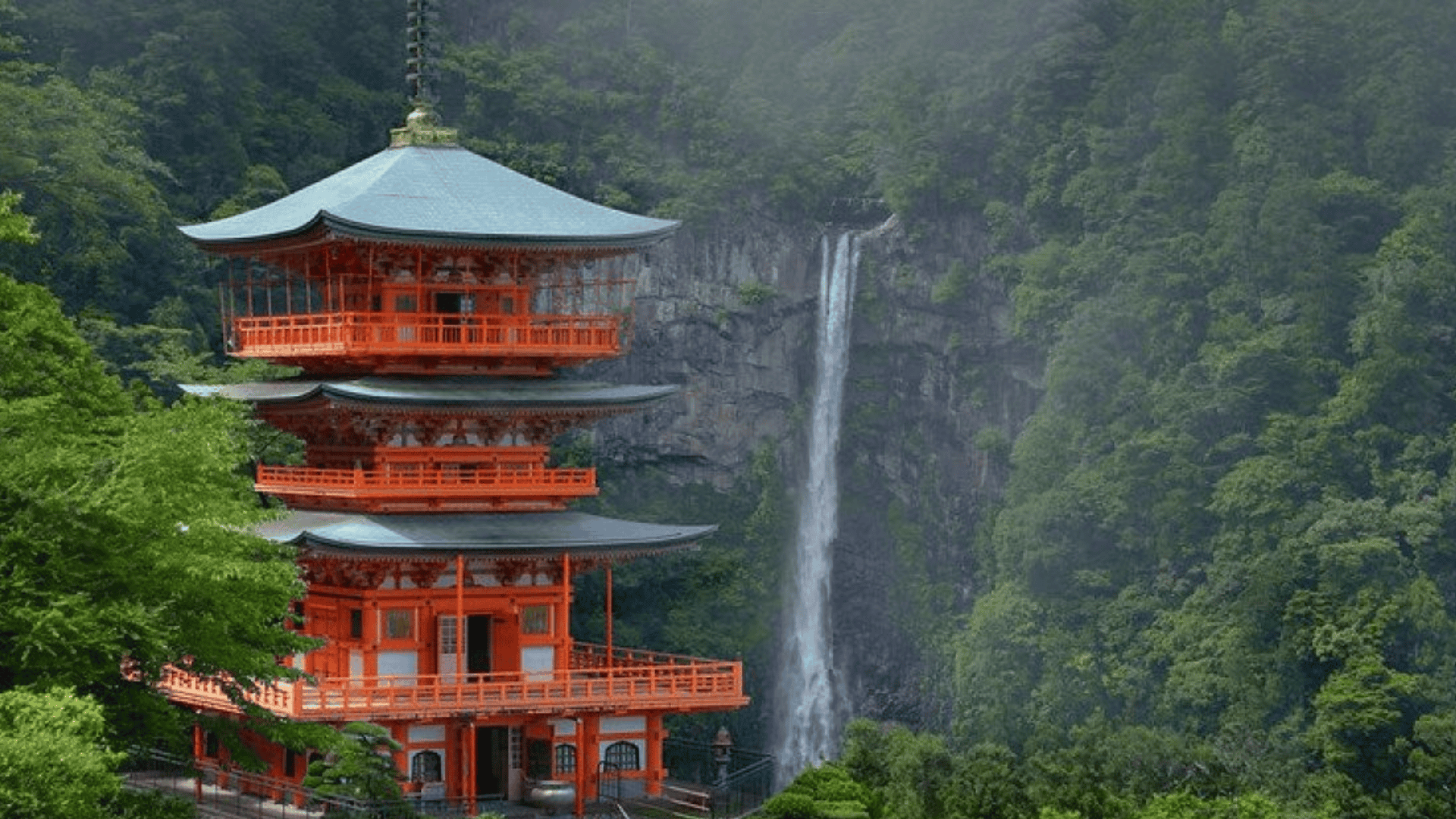
Image Source: JapanTravel
Nachi Taisha emphasizes spiritual cleansing through flowing water, sitting dramatically near Japan’s tallest waterfall. Seiganto-ji Temple shares the same grounds, showing how Buddhism and Shinto blend in the Kumano faith.
The thunderous Nachi Waterfall itself receives worship as a living deity.
Traditional festival: The spectacular Nachi Fire Festival happens every July 14th with twelve massive torches carried down the shrine steps. This ceremony honors the waterfall deity and draws thousands of visitors annually.
Overview of Main Routes
The Kumano Kodo trail offers four distinct paths, each with unique landscapes and spiritual experiences. These ancient routes connect different regions of Japan to the sacred Kumano shrines.
1. Nakahechi (Imperial) Route
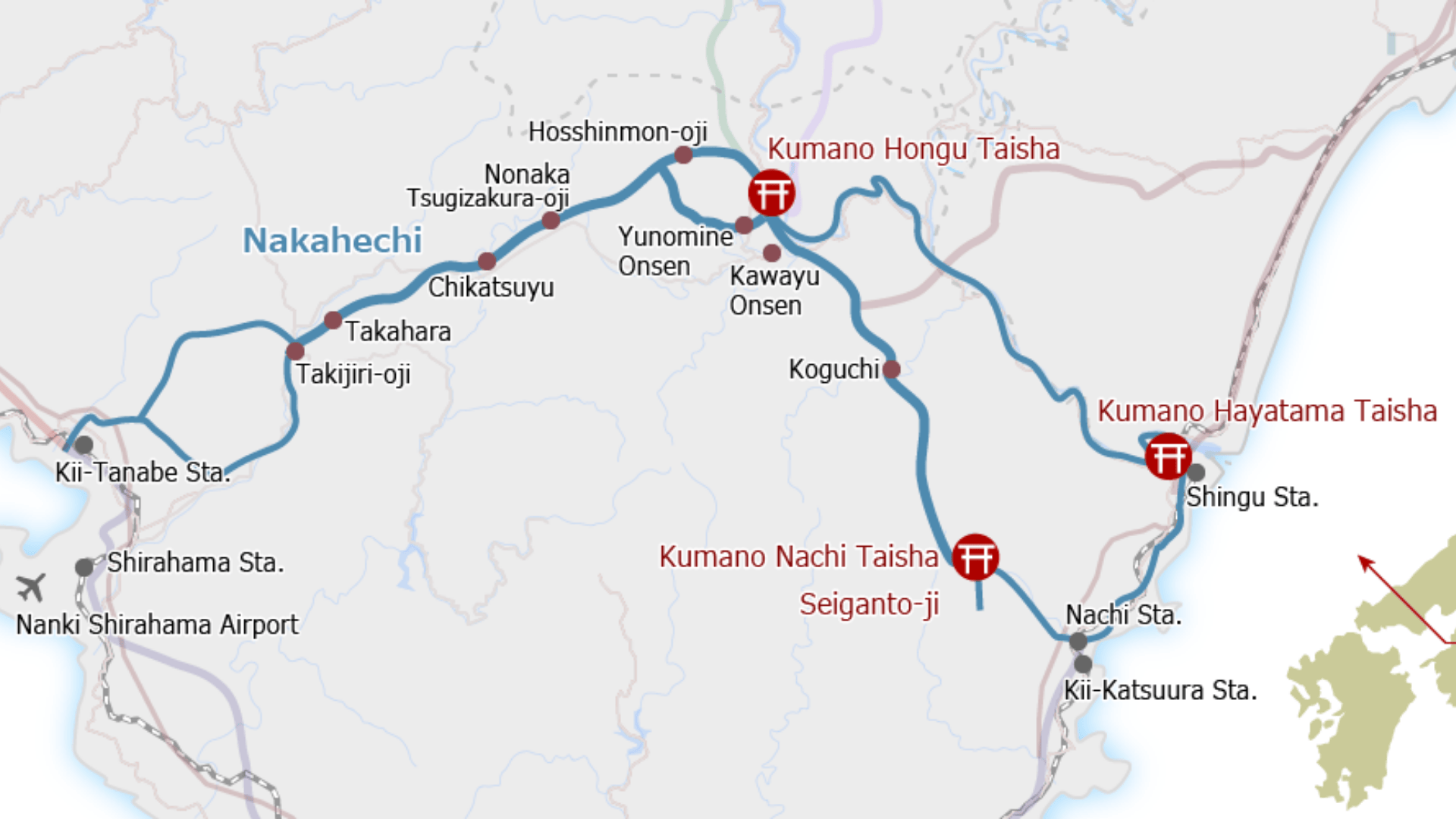
Image Source: Tanabe City Kumano Tourism Bureau
The Nakahechi runs from Tanabe to the three main shrines.
Emperors once walked this path, earning it the “Imperial Route” title. Well-maintained trails and clear markers make it perfect for beginners.
Stone-paved sections and mountain forests create a classic pilgrimage atmosphere.
Route Details:
- Distance: 38km (3-5 days)
- Difficulty: Moderate
- Best for: First-time pilgrims
2. Kohechi Route
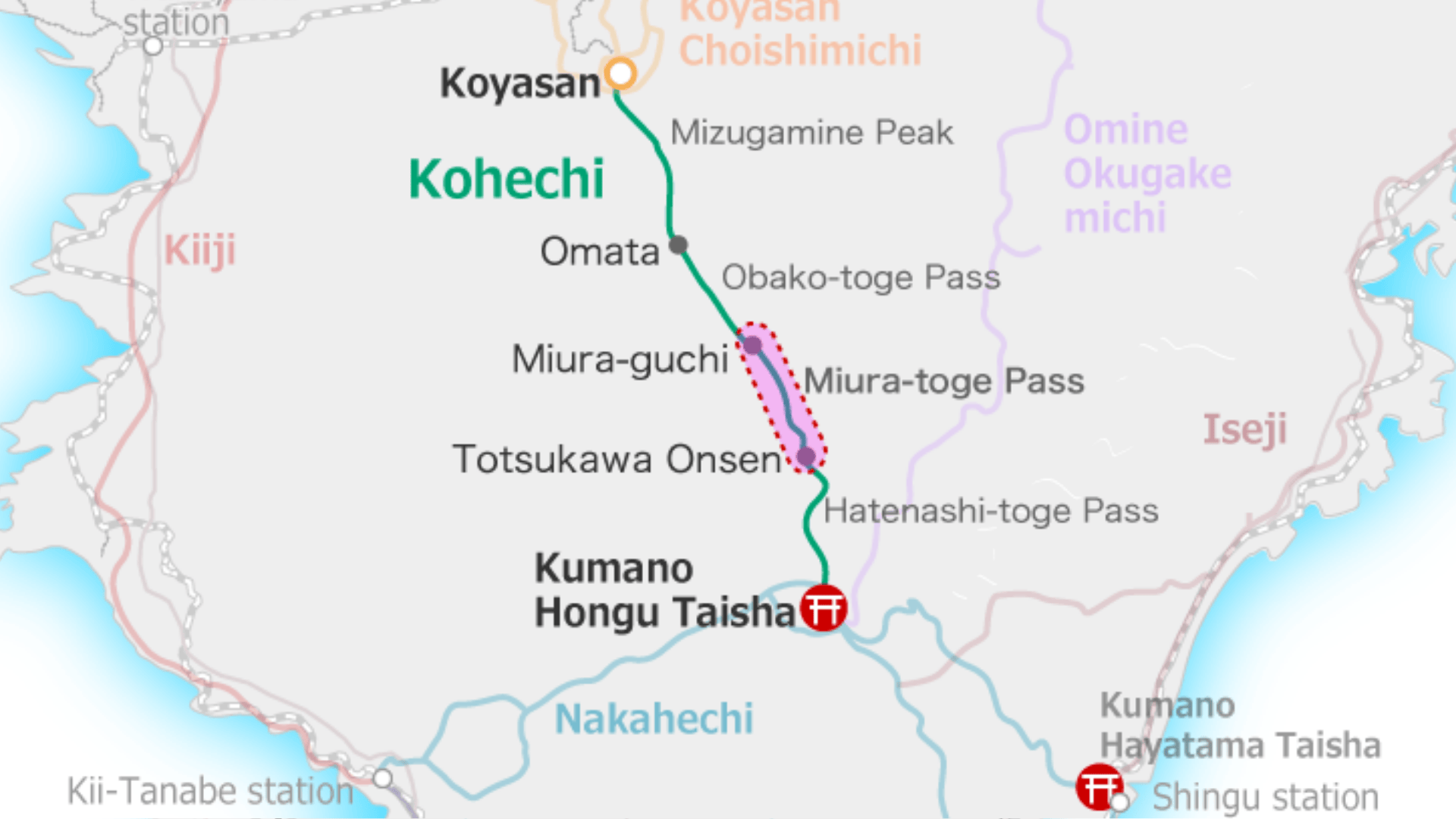
Image Source: Tanabe City Kumano Tourism Bureau
The Kohechi connects Mount Koya to Kumano through remote wilderness.
This demanding route requires good fitness and hiking skills. Deep forests, steep valleys, and limited facilities test pilgrims’ determination.
The spiritual connection between the Shingon Buddhism headquarters and Kumano makes the effort worthwhile.
Route Details:
- Distance: 70km (4-6 days)
- Difficulty: Challenging
- Best for: Experienced hikers
3. Iseji Route
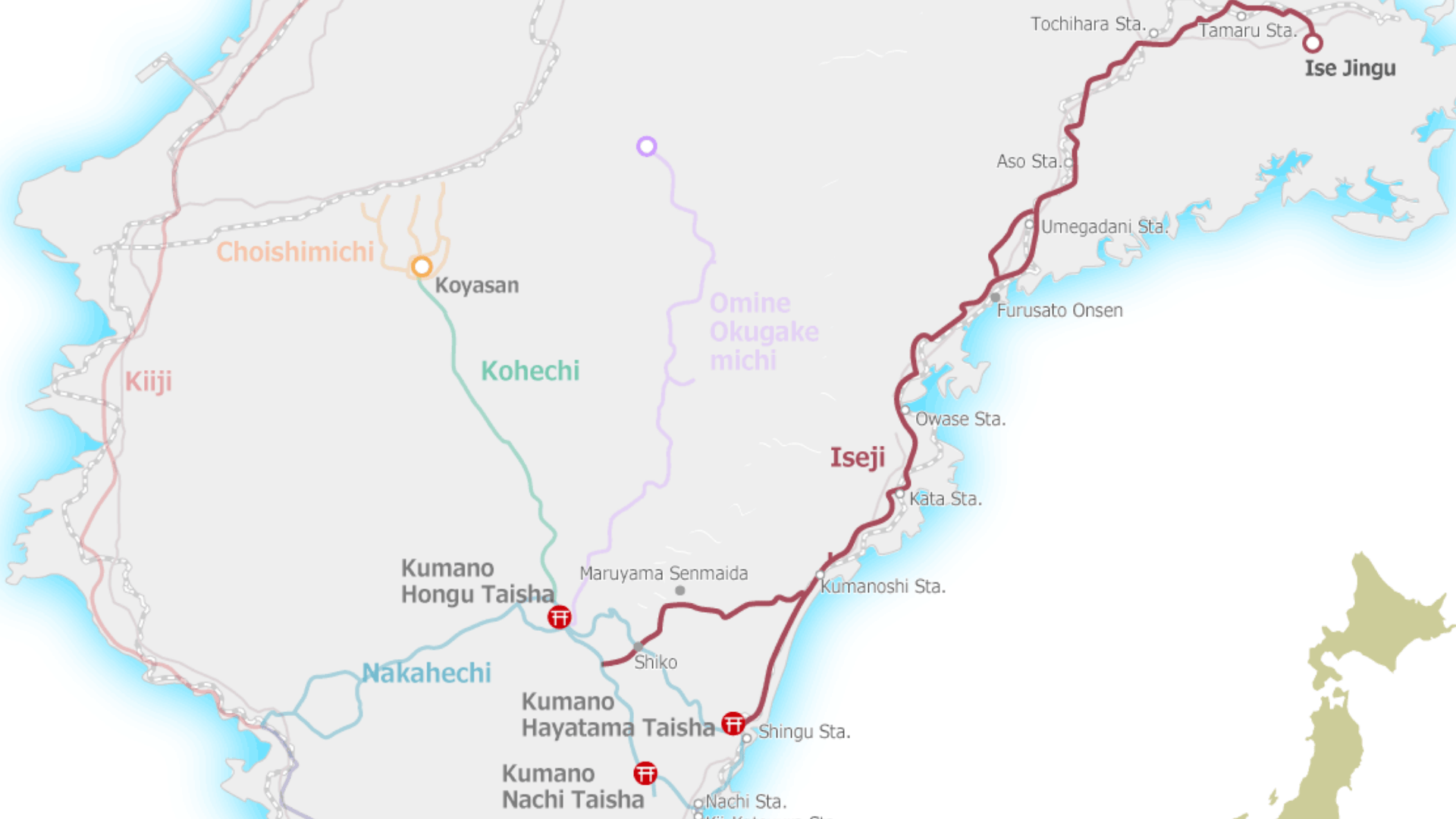
Image Source: Tanabe City Kumano Tourism Bureau
The Iseji links Ise Grand Shrine to Kumano along Japan’s coast.
This route combines two major pilgrimages into one spiritual quest. Coastal views, fishing villages, and ocean breezes provide constant variety.
Traditional communities along the path maintain centuries-old hospitality.
Route Details:
- Distance: 170km (7-10 days)
- Difficulty: Moderate to challenging
- Best for: Pilgrims seeking dual shrines
4. Ohechi Route

Image Source: Tanabe City Kumano Tourism Bureau
The Ohechi hugs the Pacific coastline with dramatic ocean views.
This scenic route passes through traditional fishing communities and coastal forests. Weather can change quickly near the sea, requiring flexible planning.
The combination of mountain paths and seaside walking offers unique perspectives on nature worship.
Route Details:
- Distance: 90km (5-7 days)
- Difficulty: Moderate
- Best for: Coastal scenery lovers
5. Kii-ji Route

Image Source: Tanabe City Kumano Tourism Bureau
The Kii-ji connects various temples and shrines across the broader Kii Peninsula region.
This route focuses on the historical and cultural connections between different sacred sites. Ancient roads and traditional villages provide insight into how pilgrimage routes shaped local communities. T
he path offers a deeper understanding of how the Kumano faith spread throughout the region.
Route Details:
- Distance: 60km (3-4 days)
- Difficulty: Moderate
- Best for: Cultural history enthusiasts
Best Time to Walk & Cultural Festivals
The Kumano Kodo trail offers different experiences throughout the year. Weather conditions, crowd levels, and cultural events vary by season, helping you choose the perfect time for your pilgrimage.
| Season | Weather | Festivals & Events | Crowds | Best For |
|---|---|---|---|---|
| Spring (Mar-May) | Mild temperatures, cherry blossoms | Spring shrine festivals, seasonal blessings | Moderate to High | First-time pilgrims, nature lovers |
| Summer (Jun-Aug) | Hot, humid, rainy season | Nachi Fire Festival (July 14), local celebrations | High | Festival enthusiasts, experienced hikers |
| Autumn (Sep-Nov) | Cool, clear skies, colorful leaves | Harvest festivals, autumn ceremonies | High | Photography, comfortable walking |
| Winter (Dec-Feb) | Cold, possible snow, some closures | Quiet rituals, winter purification | Very Low | Solitude seekers, spiritual reflection |
Peak seasons require advance booking, especially during the cherry blossom season and the autumn foliage.
Off-season winter walking offers unique spiritual experiences but requires careful planning due to weather conditions and limited facilities.
Planning Your Kumano Kodo Experience
Planning your Kumano Kodo trail experience involves practical considerations from transportation to accommodation that can make or break your pilgrimage.
Getting There: The Kumano Kodo trail connects to major cities through various transport options. From Tokyo, take the JR Tokaido line to reach access points in about 4-5 hours total.
From Osaka and Kyoto, direct trains reach Kumano in 2-3 hours. Bus services also connect major stations to trailheads, helping ensure a smooth arrival.
Accommodation Options: Ryokans offer traditional Japanese hospitality along the Kumano Kodo trail with authentic experiences, local meals, and tatami rooms.
Many ryokans have served pilgrims for generations. Minshuku (family-run guesthouses) offer budget-friendly stays with simple lodgings and warm hospitality. Temple lodgings provide the most authentic pilgrim experience.
Luggage Services: Luggage shuttle services transport bags between accommodations, letting pilgrims walk with light day packs.
Most major stops along the Kumano Kodo trail offer this convenience. Booking luggage transport requires advance planning with 1-2 days’ notice, making the pilgrimage accessible to more people.
Cost Overview: Understanding the costs involved helps you budget effectively for your Kumano Kodo trail pilgrimage.
| Item | Cost (¥) |
|---|---|
| Transport from Tokyo | 8,000-12,000 |
| Transport from Osaka/Kyoto | 3,000-5,000 |
| Ryokan (per night) | 15,000-30,000 |
| Minshuku (per night) | 6,000-12,000 |
| Temple lodging (per night) | 5,000-10,000 |
| Luggage transfer (per bag) | 500-800 |
| Meals (per day) | 3,000-6,000 |
| Trail permits | Free |
Etiquettes And Pilgrim Conduct
Proper etiquette on the Kumano Kodo trail shows respect for centuries of sacred tradition and enhances your spiritual experience.
Following these simple guidelines helps maintain the respectful atmosphere that makes these ancient paths so meaningful for all pilgrims.
- Greet fellow pilgrims with “Konnichiwa” or a respectful bow to create bonds between travelers
- Show proper conduct at sacred sites by bowing before entering and washing hands at purification fountains
- Photography rules vary by location – always ask permission before taking photos of people or ceremonies
- Follow the “leave no trace” principle and stay on marked trails to honor the sacred landscape
- White clothing symbolizes purity and spiritual seeking, connecting modern walkers to historical practices
- Walking staffs provide both practical and symbolic support, representing the pilgrim’s spiritual quest
The Bottom Line
The Kumano Kodo trail represents more than just a hiking experience through Japan’s ancient forests and sacred mountains.
This special pilgrimage network continues to offer modern travelers the same spiritual renewal that emperors, monks, and common people have sought for centuries.
Each step connects you to a living tradition where natural beauty and sacred purpose intertwine.
Planning your Kumano Kodo trail experience requires thoughtful preparation, from choosing the right route to understanding proper shrine etiquette.
Yet the rewards extend far beyond physical accomplishment. The trail offers a rare opportunity to disconnect from modern life while connecting deeply with Japanese culture and spirituality.
The Kumano Kodo trail provides a profound reminder that some journeys change us in ways we never expected. Share your own experiences or questions in the comments below.

